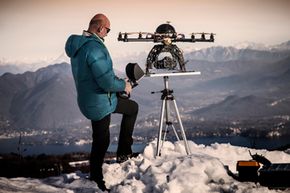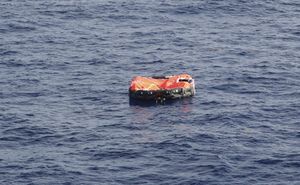Drones get a bad rap. First, there's that name. The flying machines sound like something out of a Michael Bay flick. Some soulless, hulking beast that threatens to wipe Shia LaBeouf, Megan Fox and the rest of human civilization off of the map before Will Smith and Hugh Jackman -- on the day he was set to retire from the local police force -- swoop in to save the day. Then, of course, there's the increasingly publicized use of unmanned aerial vehicles (UAVs) to carry out surveillance and bombing missions in foreign lands. The truth is that drones are more than just spying and military tools. They also come in handy in a wide variety of other settings, including search and rescue efforts. At least they could, once regulators make it easier to throw a drone up in the sky, developers design them to better resist conditions in the field and teams are trained how to use them.
What makes drones attractive to searchers and rescuers is their ability to fly in, move around and get out of disaster zones and hard-to-reach sites without the danger of putting real pilots and crew in harm's way, and at a fraction of the cost of using a helicopter or plane. Strap a camera on a small quadcopter or other unmanned aerial vehicle, and you can get real-time overhead footage of a disaster area that can be used to assess the damage and look for survivors. Give a drone medical and other supplies, and it can be flown into quarantined or inaccessible locales to deliver them to folks in need [sources: McFarland, McFarland, United Nations].
Advertisement
In fact, drones have already been used in places like Haiti and the Philippines to map areas after a natural disaster. In the aftermath of Super Typhoon Haiyan in 2013 in the Philippines, searchers and rescuers used a small UAV equipped with a high-resolution camera to scout out a safe place to base their operations. They then sent the drone on missions to film roads in order to determine which were passable. Flights up and down the nearby coast also helped the team get an idea of where flooding had occurred and which villages were hit hardest. Combined, those are tasks that experts said would have taken a lot more time and manpower to complete by foot. They also said the flying machine could have been used to search for survivors, had it arrived on the scene right after the typhoon swept through [source: United Nations].
In Wisconsin, a hobbyist lent his drone to an effort to locate a missing 82-year-old woman who turned up in a remote bean field. Searchers, dogs and a helicopter team had already spent three days trying to find the lady before the drone -- whose owner had equipped it with a camera for snow sport shooting purposes -- spotted her in the 200-acre field [source: Newman].
The trouble in the United States and elsewhere is in getting permission to use the drones. Privacy and other concerns have many people uncertain about how and when UAVs should be employed. Although the Federal Aviation Administration (FAA) has maintained a strict policy, granting drone authorization to businesses and organizations in very limited circumstances, it appears that the ice is starting to melt. The FAA is mulling a set of proposed rules that would allow search and rescue and other groups to use small drones, as long as operators first pass an aeronautical knowledge test. Meanwhile, a Maine search and rescue outfit in April 2015 became the first such group to earn federal approval to fly drones stateside [sources: Schroyer, Atherton].
Advertisement












